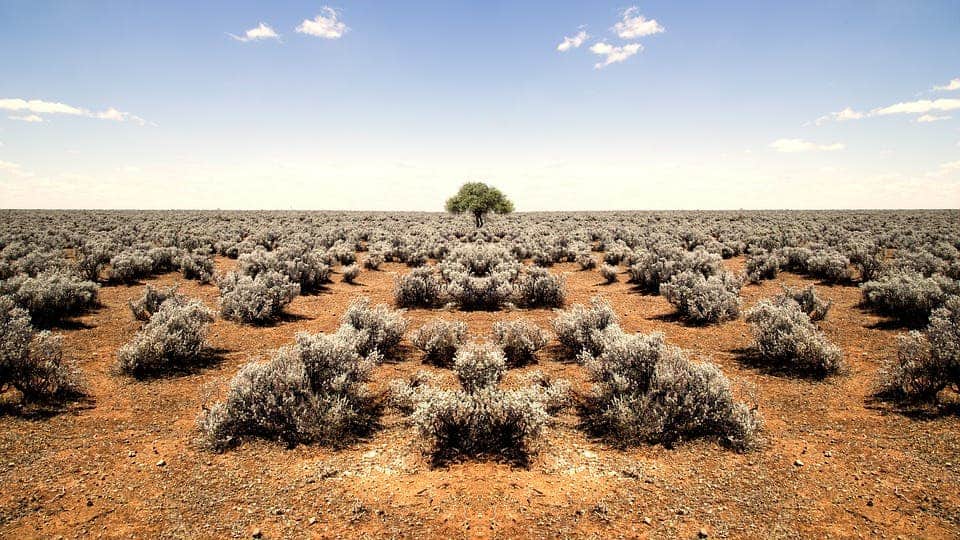In a hotter future, plants will consume more water than they do today — which means a drier future despite the anticipated increases in precipitation.

Climate heating is estimated to increase precipitation levels in places like the United States and Europe through the generation of more water vapor and weather pattern disruptions. However, humans may find themselves in a net drier future, a new paper explains: as the climate changes, crops and wild plants will use up more water in these areas.
More supply, much more demand
“Approximately 60% of the global water flux from the land to the atmosphere goes through plants, called transpiration. Plants are like the atmosphere’s straw, dominating how water flows from the land to the atmosphere. So vegetation is a massive determinant of what water is left on land for people,” explained lead author Justin S. Mankin, an assistant professor of geography at Dartmouth.
“The question we’re asking here is, how do the combined effects of carbon dioxide and warming change the size of that straw?”
Led by scientists at Dartmouth College, the paper notes a drier future for people in areas that are already facing water stress despite anticipated increases in precipitation levels.
The prevailing theory up to this study was that the increase in CO2 gas in the atmosphere will lead to reduced water consumption in plants — which would ultimately mean more water in streams and rivers. The underlying mechanism is that higher concentrations of CO2 allow plants to perform photosynthesis with greater water efficiency, as they can close off some of their pores (stomata) on their leaves. These pores shuttle CO2 molecules inside leaves, but also bleed out water through evaporation while they are open. All the water they don’t take, the logic goes, will instead percolate through the ground and into groundwater reserves.
This assumption isn’t wrong; however, it’s only accurate to the tropics and the extremely high latitudes, where freshwater is plentiful and competition for it is low. For most areas of the mid-latitudes, the team explains, plant responses to climate change will make the land drier, not wetter.
The researchers used climate modeling to analyze how freshwater availability will shift under our current projections of climate change and the ways precipitation will be divided among plants, rivers, and soils. They used a new, self-developed method to partition future precipitation and to calculate runoff in a warmer climate with higher levels of atmospheric carbon dioxide.
All in all, the team reports that as carbon dioxide levels rise in the atmosphere, plants will indeed take in less water, which will make the land wetter. However, warmer climates will mean a longer and warmer growing season. So, after the initial wet period, plants will actually start drying out the land (as they grow for longer than before). As CO2 levels keep increasing and mean temperatures keep rising after this second phase, plants are likely to grow even more (as photosynthesis is further amplified).
In some areas of the world, the water burden of the latter two factors (longer growing seasons and stronger photosynthesis) will out-pace gains from closing stomata, meaning that vegetation will, overall, consume more water than before. Vast swathes of mid-latitude lands will have less water in the soil and less water draining into streams, despite the projected increase in precipitation and plant water-efficiency.
So why is this a problem? Well, fresh water is essential for life, be it humans, animals, plants, or everything smaller. Our industries also depend on it. However, it is a limited resource, both in quantity and supply. Many areas of the world receive most precipitation during the cold part of the year (around winter) but consume most during the warm period (summer).
“Throughout the world, we engineer solutions to move water from point A to point B to overcome this spatiotemporal disconnect between water supply and its demand. Allocating water is politically contentious, capital-intensive and requires really long-term planning, all of which affects some of the most vulnerable populations,” Mankin adds.
“Our research shows that we can’t expect plants to be a universal panacea for future water availability. So, being able to assess clearly where and why we should anticipate water availability changes to occur in the future is crucial to ensuring that we can be prepared,”
The paper “Mid-latitude freshwater availability reduced by projected vegetation responses to climate change” has been published in the journal Nature Geoscience.






